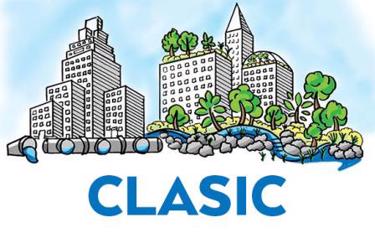EPA Grantees Develop Tool To Help Water Resources Managers Make Stormwater Infrastructure Decisions
By U.S. EPA

Stormwater runoff is a major cause of water pollution in urban areas as it can carry trash, bacteria, heavy metals, and other pollutants from the urban landscape into nearby water bodies. Higher flows from heavy rains can also cause erosion and flooding in urban streams, damaging habitat, property, and infrastructure.
Communities are facing decisions on how best to upgrade aging stormwater infrastructure and build new infrastructure to lessen the impacts of stormwater runoff. As communities make these decisions, they need tools to assess their options in order to determine the most cost-effective approach.
In 2016, EPA awarded a grant to a team of researchers led by the Water Research Foundation to address these issues. The team has recently released the Community-Enabled Lifecycle Analysis of Stormwater Infrastructure Costs (CLASIC) tool to help water resource managers make decisions with regards to stormwater infrastructure. CLASIC was created in collaboration with researchers from Colorado State University, Wichita State University, University of Maryland, University of Utah, University of Georgia and Water Environment Federation, with additional assistance from Geosyntec Consultants and Wright Water Engineers.
CLASIC is an online screening tool with a life cycle cost framework that allows municipalities to assess and plan for various combinations of stormwater infrastructure. Users can take into account financial decisions, infrastructure performance, and environmental and social benefits when evaluating ways to strengthen infrastructure from the neighborhood to watershed scale. Stormwater professionals, community planners, and local decision-makers can use CLASIC to understand and weigh the estimated costs, reductions in runoff and pollutant loads, and benefits of various planning scenarios as they consider stormwater management projects.
In developing the CLASIC tool, project team members from the Wichita State University and University of Maryland Environmental Finance centers interviewed potential users to gauge community interest and identify financial and technical needs that could be addressed by the tool. After the first version of the tool was developed, stormwater experts from EPA, municipalities, and universities across the country were engaged to beta test the tool. These activities helped accurately reflect the community, financial and technical needs and make the tool more useful to users.
“This is the culmination of a multi-year effort to stakeholders with powerful tools for comparing the costs and benefits of stormwater infrastructure alternatives,” said Dr. Peter Grevatt, CEO of The Water Research Foundation. "We are excited to release the CLASIC tool as we continue to focus on water infrastructure as a national priority.”
CLASIC users start by selecting a project area, and the tool uploads data to characterize the chosen area. The sources of this data include the National Land Cover Database, United States Census Bureau, and the Soil Survey Geographic Database.
CLASIC users can then build and compare multiple stormwater infrastructure options and simulate various climate scenarios. Users can also select from a variety of gray and/or green stormwater practices, like rain gardens, infiltration trenches, permeable pavement, green roofs, storage vaults, wet ponds, and stormwater harvesting. Green infrastructure can improve stormwater management in multiple ways, including reducing the volume of stormwater entering the sewer system, decreasing costs of grey infrastructure updates, and managing stormwater runoff as a resource, not a waste, to enhance scarce water supplies.
According to Ben Packard, EPA Project Officer on the grant, “The tool lets decision-makers compare scenarios, which ultimately allows them to make better long-term decisions while becoming better informed of the range of possibilities for upgrading existing or installing new stormwater infrastructure.”
Co-benefits of green infrastructure such as energy efficiency and increasing groundwater flow can be evaluated alongside stormwater infrastructure performance variables like pollutant reduction and runoff reduction. The CLASIC outputs are displayed in an immersive set of charts, graphs, and tables that can be analyzed, printed, and shared.
CLASIC also complements EPA’s existing suite of green infrastructure modeling tools, which includes models, tools, and technologies for communities to manage water runoff. The resources in this toolkit incorporate green and gray infrastructure practices to help communities manage their water resources in a more sustainable way and increase resilience to future changes.
If you are interested in learning more about CLASIC, register for the May 26 EPA webinar at 2:00 p.m. ET to hear directly from the creators of the tool.
Learn More:
Community-enabled Lifecycle Analysis of Stormwater Infrastructure Costs (CLASIC) Tool
